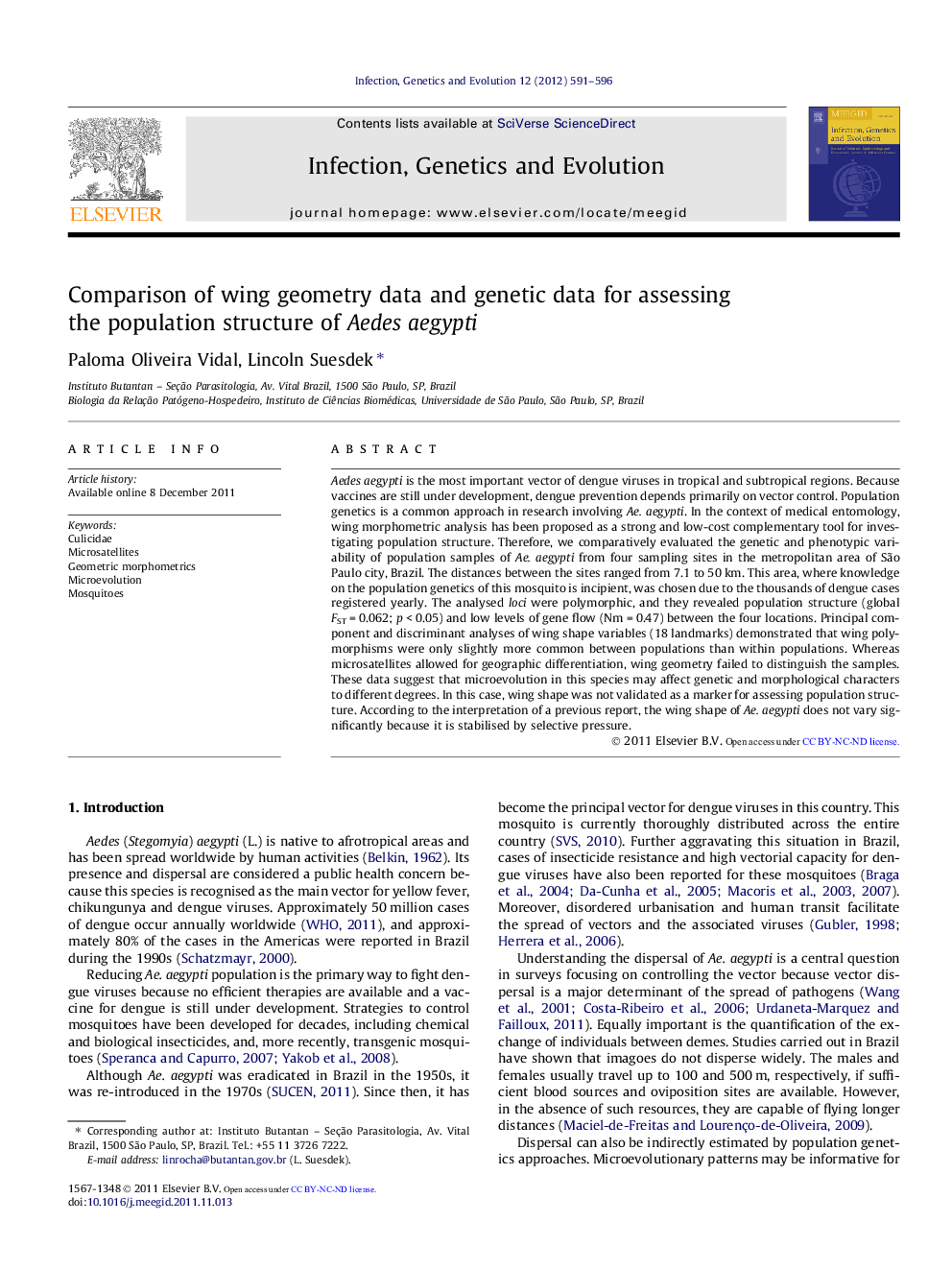| Article ID | Journal | Published Year | Pages | File Type |
|---|---|---|---|---|
| 5911176 | Infection, Genetics and Evolution | 2012 | 6 Pages |
Aedes aegypti is the most important vector of dengue viruses in tropical and subtropical regions. Because vaccines are still under development, dengue prevention depends primarily on vector control. Population genetics is a common approach in research involving Ae. aegypti. In the context of medical entomology, wing morphometric analysis has been proposed as a strong and low-cost complementary tool for investigating population structure. Therefore, we comparatively evaluated the genetic and phenotypic variability of population samples of Ae. aegypti from four sampling sites in the metropolitan area of São Paulo city, Brazil. The distances between the sites ranged from 7.1 to 50 km. This area, where knowledge on the population genetics of this mosquito is incipient, was chosen due to the thousands of dengue cases registered yearly. The analysed loci were polymorphic, and they revealed population structure (global FST = 0.062; p < 0.05) and low levels of gene flow (Nm = 0.47) between the four locations. Principal component and discriminant analyses of wing shape variables (18 landmarks) demonstrated that wing polymorphisms were only slightly more common between populations than within populations. Whereas microsatellites allowed for geographic differentiation, wing geometry failed to distinguish the samples. These data suggest that microevolution in this species may affect genetic and morphological characters to different degrees. In this case, wing shape was not validated as a marker for assessing population structure. According to the interpretation of a previous report, the wing shape of Ae. aegypti does not vary significantly because it is stabilised by selective pressure.
⺠Diagnostic power of wing geometry and genetic markers were compared. ⺠Microsatellites revealed population structure and low gene flow between populations. ⺠Wing shape did not reveal population structure. ⺠Wings of Brazilian mosquitoes from Brazil, Thailand and Colombia were quite similar. ⺠Population genetics of Aedes aegypti from São Paulo city (Brazil) was first described.
